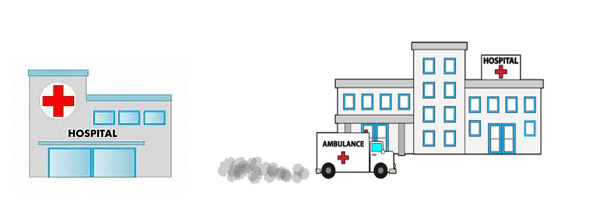Routine Interfacility Patient Transport (RIPT)
There is a need for interoperability between hospitals and Emergency Medical Service (EMS) systems. When a hospital patient is discharged, there is no standard for documentation provided to the EMS transport team that informs them of important patient care information. This profile provides a methodology to bridge that gap.
Summary
Transport organizations must record information about patients being transferred under their care so that the organizations can minimize errors in their patient care record and the patient can have accurate and an appropriate level of care for their condition. This information is either gathered verbally through nursing staff or by perusing extensive paperwork to find the information needed for the transport patient care record. Once the transport is completed, the same information is also communicated as part of the transport summary. While the transfer of patient information is often done in electronic information systems today, a lack of standards means that duplicate entry is commonplace, leading to a higher chance for data entry errors by transport staff. With this profile the transport team’s time spent gathering information in the facility can be greatly reduced, accurate data is received and sent, and the team can spend quality time providing care to the patient.
Benefits
The time transport team’s spend gathering information in the hospital can be greatly reduced and decreasing duplicate data entry lessens the chance of data entry errors. This decreases the potential for patient care errors and allows more time to be spent providing care to the patient, rather than spending prolonged periods of time searching for, and manually re-entering needed data. Another benefit is improved throughput for Emergency Departments (ED) and hospital care units which increases inpatient bed availability by creating a faster turnover rate for hospital discharges.
Details
Patient discharge is shown using FHIR transactions and CDA documents to make the flow of the patient information from the hospital to the transport team paperless.
Systems Affected
- Transport systems patient record systems
- Hospital electronic patient record systems
Actors & Transactions:
Specification
Profile Status: Trial Implementation
Documents:
Patient Care Coordination (PCC) IHE PCC Technical Framework:
Underlying Standards:
- HL7 FHIR STU3 http://hl7.org/fhir/STU3
- HL7 CDA Release 2.0 and Reference Information Model
See Also
The IHE PCC Interfacility Transport Summary (ITS) profile is referenced in the RIPT profile, but the ITS profile is transporting the patient to the hospital, as compared to transporting the patient from the hospital to another facility as in the RIPT profile.
Related Profiles
- Interfacility Transport Summary [1]



